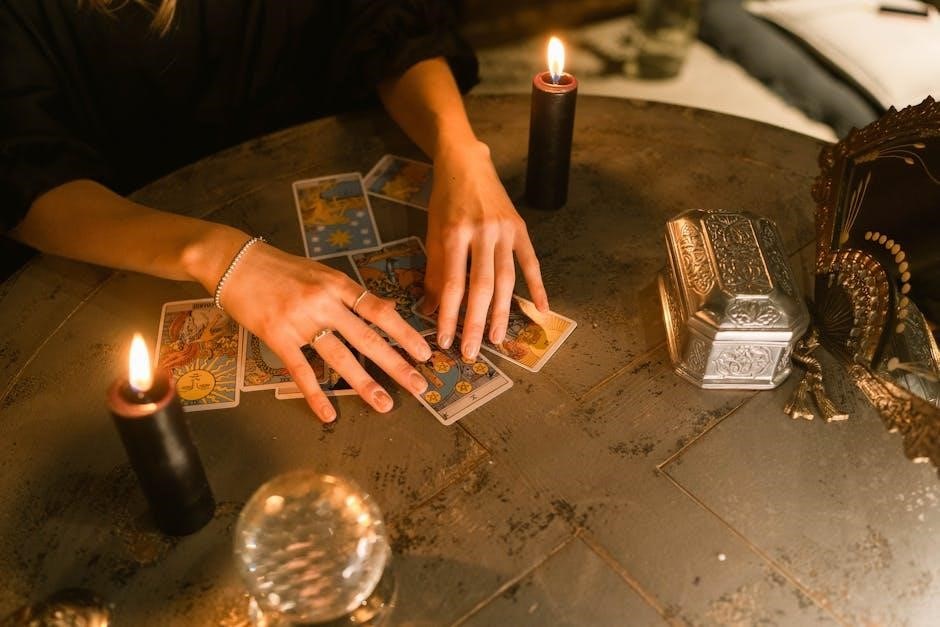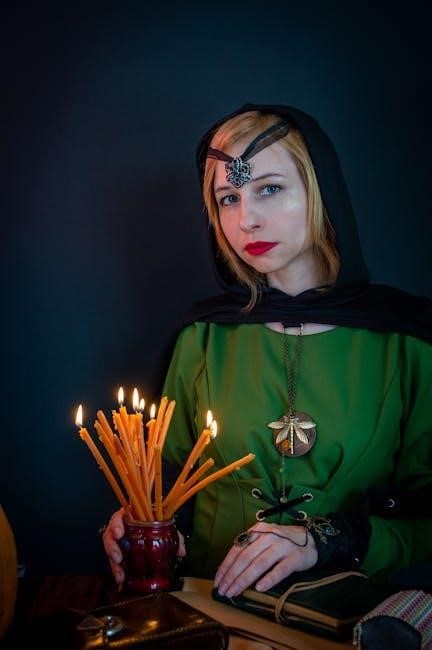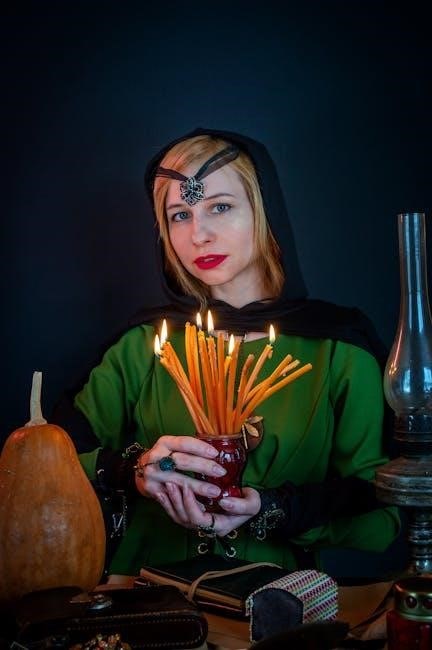What is a Crochet Magic Ring?
A magic ring, also known as a magic loop or magic circle, is an adjustable technique used in crochet to start projects worked in the round. It’s particularly useful for amigurumi, hats, and granny squares, creating a seamless center by eliminating the hole that traditional methods often leave.

Why Use a Magic Ring?
The magic ring offers several advantages over traditional crochet starting methods, making it a popular choice for projects worked in the round. Primarily, it eliminates the unsightly hole that often forms in the center of projects when using techniques like chaining and joining. This is especially beneficial for amigurumi, where a tight, closed center is crucial for stuffing and maintaining the toy’s shape.
Furthermore, the magic ring provides adjustability. The loop can be tightened or loosened, allowing for precise control over the center’s size. This is invaluable for achieving a professional finish and ensuring that the initial stitches are securely joined. Unlike other methods, the magic ring allows you to cinch the center closed after the first round, creating a neat and invisible start.
The technique is also versatile, accommodating various stitch counts and patterns. Whether working single crochet, double crochet, or more complex stitch combinations, the magic ring provides a solid foundation. Its adaptability makes it a go-to technique for a wide range of crochet projects, from small embellishments to larger garments. The clean, closed center achieved with a magic ring enhances the overall aesthetic and quality of the finished piece.
Common Names for the Magic Ring
The crochet magic ring, while widely recognized by this name, is also known by several other terms, often used interchangeably. Understanding these alternative names can be helpful when searching for tutorials or patterns, as different designers and crafters may prefer one term over another. One of the most common alternatives is the “magic loop,” which emphasizes the adjustable nature of the starting round.
Another frequent name is the “adjustable ring,” which directly highlights the key benefit of this technique: the ability to tighten or loosen the center. You might also encounter the terms “magic circle” or “adjustable loop,” both of which describe the circular shape and adjustable quality of the starting point. Some crafters refer to it as the “miracle ring” or “miracle circle,” perhaps due to the seemingly magical way it eliminates the center hole.
Less commonly, you may see it called a “cinch circle” or “adjustable magic ring,” the latter being a more descriptive and comprehensive term. Regardless of the name used, the technique remains the same: creating an adjustable starting point for crochet projects worked in the round, resulting in a neat, closed center.

Magic Ring vs. Other Starting Methods
When beginning crochet projects in the round, the magic ring isn’t the only option, but it’s often preferred due to its superior finish. A common alternative is the chain method, typically involving chaining a few stitches and then joining them to form a ring. While simpler to execute initially, this method often leaves a noticeable hole in the center of the finished piece.
This hole can be particularly problematic in amigurumi or projects where a tight, closed center is desired for aesthetic or structural reasons. Another starting method involves chaining two and then working several single crochets into the second chain from the hook. This technique can be easier for beginners, but similarly to the chain method, it rarely achieves the same seamless closure as the magic ring.
The magic ring’s adjustability allows you to pull the center tightly closed, effectively eliminating the hole. This results in a cleaner, more professional-looking finish, making it ideal for projects where appearance is paramount. While the magic ring may require a bit more practice to master, the resulting improvement in the finished product makes it a worthwhile skill to learn.
Materials Needed
To create a magic ring, you’ll need yarn suitable for your project and a crochet hook that corresponds to the yarn weight; Scissors will be necessary to trim the yarn. These are the basic items required for creating a magic ring.
Yarn
The choice of yarn is crucial for a successful crochet project utilizing the magic ring technique. The yarn’s weight and fiber content will significantly impact the final product’s appearance and feel; For amigurumi, which often benefits from a tight stitch definition, cotton or acrylic yarn is frequently preferred due to its durability and affordability.
When selecting yarn, consider the project’s intended use. For items that require a soft and delicate touch, such as baby blankets or wearables, merino wool or a blend of natural fibers might be a better choice. These yarns provide a gentle texture and drape beautifully, enhancing the overall comfort of the finished piece.
The yarn’s color is another essential factor to consider. Depending on the pattern and desired aesthetic, you may opt for solid colors, variegated yarns, or even experiment with color changes within the magic ring itself. The yarn label will provide valuable information about the recommended hook size, which should be carefully followed to achieve the desired stitch gauge and prevent the finished project from being too loose or too tight.
Ultimately, the best yarn for your magic ring project will depend on your personal preferences, the specific requirements of the pattern, and the desired outcome. Experimenting with different yarn types can be a rewarding experience, allowing you to discover new textures and effects that enhance your crochet work.
Crochet Hook
Selecting the right crochet hook is paramount for creating a well-executed magic ring and achieving consistent stitch quality throughout your project. The ideal hook size will depend primarily on the weight of the yarn you’ve chosen. The yarn label typically indicates the recommended hook size, which serves as a good starting point. However, personal tension and preferences may necessitate adjusting the hook size slightly.
Crochet hooks are available in various materials, including aluminum, steel, bamboo, and plastic. Aluminum hooks are a popular choice due to their smooth surface and affordability. Steel hooks are often used for fine yarns and intricate lace work, while bamboo hooks offer a comfortable grip and are favored by those with arthritis or hand fatigue. Plastic hooks are lightweight and ideal for beginners.
The hook’s size is measured in millimeters (mm) or using US letter/number designations. It’s crucial to ensure that the hook size corresponds to the yarn weight to achieve the correct stitch gauge. Using a hook that is too small can result in tight, dense stitches, while a hook that is too large can create loose, uneven stitches. Experimenting with different hook sizes can help you find the perfect match for your yarn and tension.
Ultimately, the best crochet hook for your magic ring project is the one that feels most comfortable in your hand and allows you to create consistent, even stitches. Consider trying out different hook materials and sizes to discover your personal preference and optimize your crochet experience.

Step-by-Step Tutorial: Creating a Magic Ring
Let’s embark on creating a magic ring! First, drape the yarn over your fingers, typically the index and middle fingers of your non-dominant hand, leaving a tail of approximately 3-4 inches. Cross the yarn over itself, forming a loop. Insert your crochet hook into the loop from front to back, catching the yarn strand that leads to the yarn ball. Yarn over and pull a loop through, creating a knot on the hook, but don’t tighten it completely.
Next, chain one stitch to secure the loop; this chain does not count as a stitch in subsequent rounds unless your pattern specifies otherwise. Now, work the required number of stitches for your pattern into the magic ring. For amigurumi, six single crochet stitches are common, while larger projects might require more. Insert your hook into the center of the ring, yarn over, and pull up a loop. Yarn over again and pull through both loops on the hook to complete a single crochet stitch. Repeat this process until you have the desired number of stitches.
Once you’ve completed the stitches, gently pull the yarn tail to tighten the magic ring, closing the center hole. For added security, you can weave in the tail end to prevent the ring from loosening over time. Finally, join the last stitch to the first stitch with a slip stitch to complete the round, preparing you to begin the next round of your crochet project.

Double Magic Ring Method
The double magic ring, a variation of the standard method, offers enhanced security and minimizes the risk of the center opening. Begin by wrapping the yarn around your fingers, typically the index and middle fingers, twice instead of once, creating two loops. Ensure the yarn tail is positioned away from you. Insert your crochet hook into both loops from front to back, grabbing the yarn strand leading to the ball. Yarn over and pull a loop through all layers, forming a knot, similar to the regular magic ring.
Chain one to secure the double loop; this chain typically doesn’t count as a stitch. Now, work the required number of stitches into the double magic ring, inserting your hook into the center of both loops for each stitch. Maintain even tension as you create your stitches, ensuring they are worked securely around both strands of yarn forming the ring. Once you’ve completed the necessary stitches, gently pull the yarn tail to tighten the inner loop first, followed by the outer loop, fully closing the center.
The double wrap provides extra friction, preventing the ring from easily loosening. After tightening, secure the tail by weaving it through the stitches on the wrong side of your work. This method is particularly useful for projects that will undergo heavy use or require a very tight center closure, such as amigurumi or items with intricate designs.
Troubleshooting Common Magic Ring Problems
The magic ring, while effective, can present challenges. One common issue is the ring loosening after tightening. To prevent this, ensure you pull the tail firmly and weave it securely through the stitches on the wrong side, anchoring it in multiple directions. If the center still loosens, consider using a double magic ring for added security. Another problem arises when stitches are too tight, making it difficult to insert the hook in subsequent rounds. Using a larger hook for the initial round or working slightly looser stitches can alleviate this.
Sometimes, crocheters struggle with identifying which yarn strand to pull when tightening. Remember, it’s the yarn tail, not the working yarn. Pulling the wrong strand will distort the ring. If the ring is difficult to tighten, check for knots or snags in the yarn. Using a smoother yarn can also help. Uneven stitch distribution within the ring can cause puckering or a lopsided center. Ensure each stitch is evenly spaced around the ring, adjusting as needed.
For beginners, forming the initial loop can be tricky. Practice creating the loop consistently, ensuring it’s not too tight or too loose. Watching video tutorials and practicing slowly can improve technique. If all else fails, consider alternative starting methods, like the chain-2 method, until you’re more comfortable with the magic ring.
